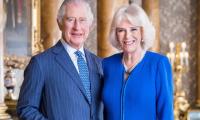The development of audio-visual technology has changed the way we think and express our ideas. The impact of this technology has been so deep that it has not only transformed the cultural landscape but also the relationship between politics, nationalism, and violence.
How life, along with all its complexities, is represented on the screen determines our thoughts, making the new visual media central to our everyday existence and understanding of the realities of our age.
Eugene states that “the audio-visual mode has become our primary way of coming in contact with the world and at the same time being detached (safe) from it.” This structural transformation of life brought about by the emergence of new media is marked by what the scholars term as the ‘new regime of the spectacle’. Spectacular events are not only recorded by the screen culture but also created by visual politics.
The revolution in the fields of communication and visual technologies, techniques, and practices has created a culture that thrives on the increased circulation and intensification of images depicting violence, terror and suffering. As media coverage of the incidents of terrorism shows, fear has become a governing principle of visual representation.
What makes this all the more disturbing is the fact that non-state actors are increasingly relying on the use of violence as their weapon of choice. This is where exploring the spectacle of terror becomes so important. Marina Warner, a novelist, and cultural critic put it so beautifully when she said: “The images we circulate have the power to lead events …. the new technical media have altered the experience and become interwoven with consciousness itself.”
The post- 9/11 period has deeply impacted the behaviour of states. The way the world, in general, and the US, in particular, responded to the external threat of terrorism has allowed ‘fear’ to seep deep within societal fabric and dictate state policies. The construction of the mainstream narrative around the spectacle of terror by the US media led to the transformation of American democracy into an expression of authoritarianism and militarism.
When the administration of President George Bush used the spectacle of terrorism to celebrate “shock and awe as a form of spectacularized violence”, it psychologically encouraged people to entertain the fantasies of empire and triumph of the American civilization, democracy, values, traditions, and way of life over what was dubbed as barbarism and primitivism.
Non-state actors also use cameras to shoot incidents of violence — like beheadings — in an attempt to defy the burgeoning military might of their adversaries, recruit more members to their cause and to spread fear and anarchy.
In order to win over greater legitimacy for their violent actions, governments have framed conversations around the use of violence employed by non-state actors, depicting it as a fight between good and evil, civilization and barbarism, and democracy and authoritarianism. This is how they have tried to justify their reliance on military power to eliminate threats of terrorism, and extremism besides rewriting laws, revising internal security policies, and authorizing greater surveillance of their own citizens.
The curtailment of civil liberties and the expanding role of the state in the private lives of citizens has been justified in the name of protecting national security in an era of extraordinary threats of violence.
Through the spectacle of violence, we are not only confronted with increasingly authoritarian and militaristic aspects of politics but also with the saddening reality of a social life that is being deprived of its foundational values of democracy and civic freedoms. As violence has spread and the ensuing debates for and against its use have intensified, social life has largely been characterized by a greater need for security.
Mary Kaldor defined the importance of social life in terms of the correlation between politics and violence wherein “rather than politics being pursued through violent means, violence becomes politics. It is not conflict that leads to war but war itself that creates conflict.”
While the concepts of the spectacle and violence are not new as different scholars have academically engaged with them over time, the post-9/11 period witnessed the merger of terrorism, violence and war. This says a lot about the power of an image to construct reality and redefine the frame of contemporary political culture within which conversations are held. The spectacle of violence has pushed out such notions as human suffering, and replaced them by ‘cinematic politics of the visceral.’
A militarized state organizes the social life of its citizenry around the notions of national honour, wherein violence, war, and warriors are represented as a normalized expression of its identity. Images such as the killing of the Wall Street Journal’s Daniel Pearl, destruction of the 16th-century statues in Afghanistan and the fall of the Twin Towers in New York depict the adversary as inhuman, barbaric and uncivilized and replace the principles of truth, reason, and justice with those of death, survival struggle and security.
The spectacularity of these images is not only intended to create ‘shock and awe’ but also legitimize violent behaviour, making violence central to the war of images. The spectacle here serves as a tool to legitimize social relations in ways that erode democratic freedoms and civic liberties.
As explained earlier, the spectacle is not new. It has been linked to the notions of seduction, illusion, and exhibition. During the 20th century, the people were lured through different representations and practices to give in to the dictate of the state and the demands of the market. The spectacle was employed to elicit consent, and browbeat people into submission through fear.
While states have demonstrated their monopoly on the violence in the historical appearance of the spectacle, their power to actually employ violence has been proportional to their ability “to command obedience for the sake of peace, justice, prosperity and reasonable expectations of security.”
The function of the spectacle is that it ‘isolates all it shows from its context, its past, its intentions and consequences.’ Following the debacle of the Vietnam War, a discourse emerged within the US that sought to introspect on how the whole war effort was represented. The idea governing this thought process was to create a distance between the citizen and the war — including how it was conducted militarily and politically.
As subsequent Hollywood movies employed the logic of ‘war as the spectacle’, what they sought to achieve was to separate the citizens from the reality of war as part of what Stahl describes as a citizen being “purged of political connection to the military.”
The strategy worked well and by the time the first Gulf War was launched, the logic of the spectacle had the desired effect when it turned the citizen into a “submissive, politically disconnected, complacent and deactivated audience member.”
In other words, the spectacle helped citizens reframe their terms of engagement with the war effort by creating desired alienation between them and the war. This new war, as it came to be represented, changed the very manner of how it was consumed by the audience.
The writer, a Chevening scholar, studied International Journalism at the University of Sussex.
Email: amanatchpk@gmail.com
Twitter: @Amanat222
People stand in line up as election officials check their ballot papers during voting general election at a polling...
Women show their voter identity cards as they stand in a queue before casting their votes in Agartala. — PTIThe 18th...
Former prime minister Imran Khan. — Instagram/ imrankhan.ptiAn old saying has it that “when you dance with the...
Kashmiris in Indian illegally occupied Kashmir protesting against the Indian occupation as the forces of India looked...
A representational image showing residents walking at a wholesale market in Karachi. — AFP/FileOnce again there is...
A representational image showing late Pakistani human rights activist and Supreme Court lawyer Asma Jahangir. —...







